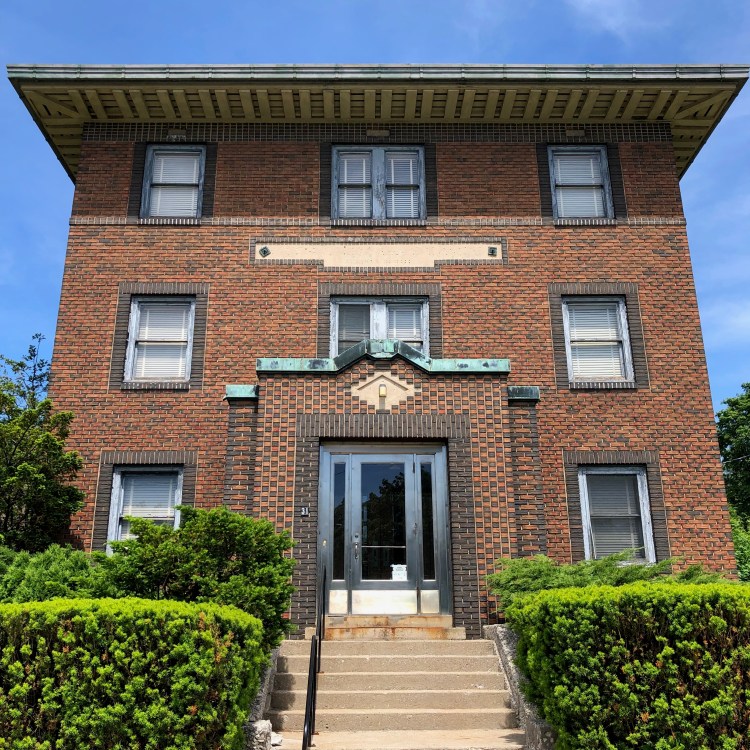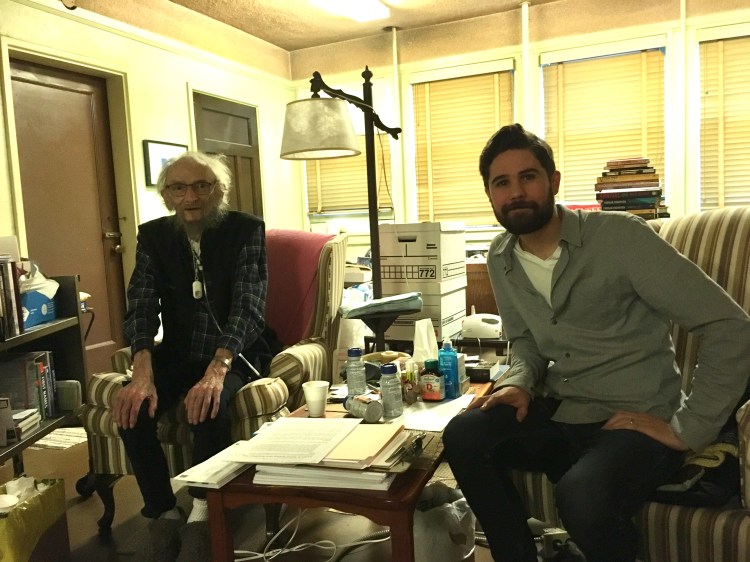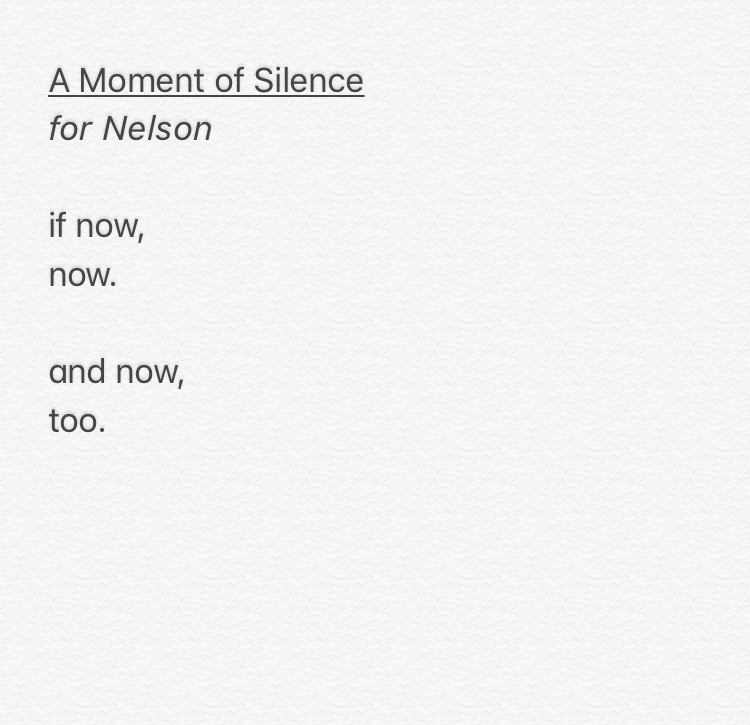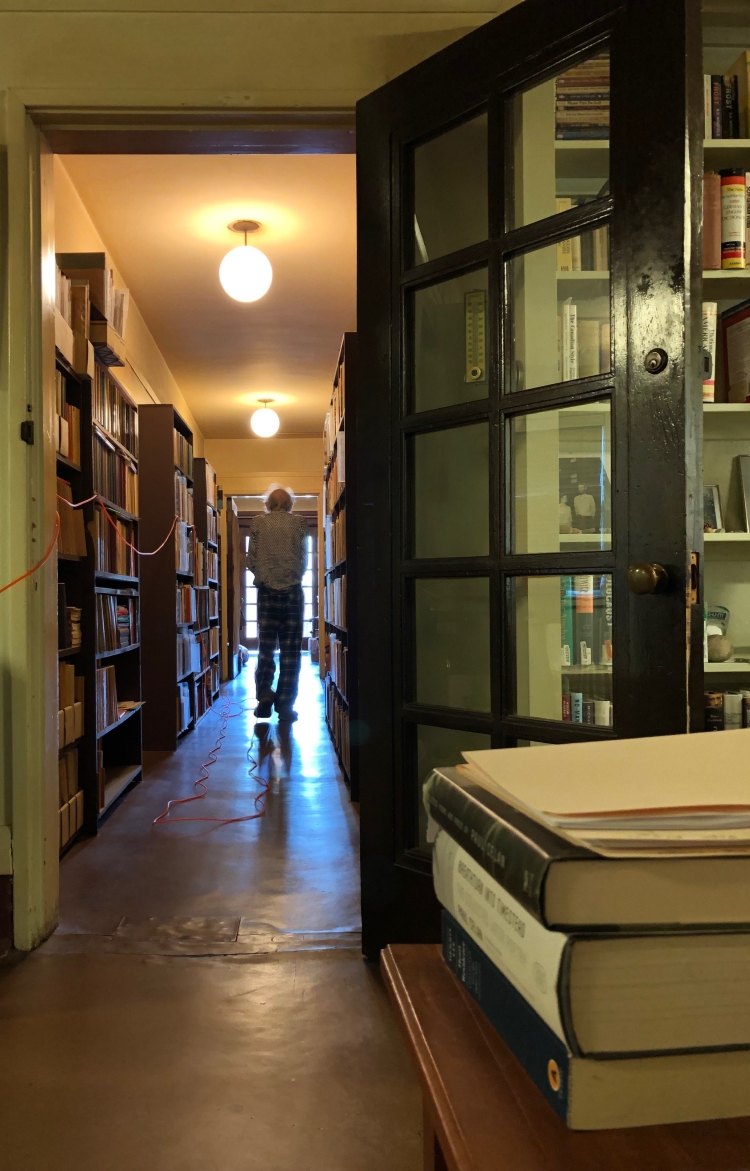
Nelson Ball died two days ago on Friday August 16, 2019. Nelson was a poet, editor, publisher, and bookseller specializing in the small press in Canada. His influence in each of these fields is beyond my ability to express here and he brought to each of these roles the same kindness and generosity that he brought to his friendships. I count myself lucky to have known him for the final decade of his life, to have worked with him, and most importantly to have been his friend.
I’ve made arguments in other, more formal venues about his importance in the small press, and won’t repeat them here—one chapter of my dissertation is about his work as a bookseller (online in full); I recently published an index of the three little magazines he edited in the 1960s (currently behind a paywall but only for a short time); and I was privileged to publish three chapbooks by Nelson through Apt. 9 Press, including his bpNichol Chapbook Award winning Small Waterways, and most recently A Letter to Amanda Bernstein and a Checklist of Weed/Flower Press (online in full). Here I simply want to remember my friend Nelson.
I first contacted Nelson in summer 2009. I was conducting research for my M.A. on the Contact Poetry Reading Series (1957-1962) and reached out to Nelson for research help. I was beginning to know his poetry and his reputation, and hoped that he might be able to point me in some useful directions. Almost instantly I received back a box full of books—magazines from the 1960s, chapbooks, and copies of Barbara’s published journals (she sent those along in addition to Nelson’s gifts, and are a now favourite re-read every few years). His and Barbara’s response was instructive in so many ways. It was kind and helpful; it showed that booksellers tended to have things that libraries didn’t; and it showed me that people who spend their lives in the small press are very often good people (there are certainly no financial rewards for such a life). Barbara died a few months later and I regret not meeting her in person.
My friendship with Nelson grew in the following decade. I sent him copies of everything Apt. 9 published. I gradually collected a sizable number of his books, chapbooks, and broadsides. When I was editing The Collected Poems of William Hawkins, Nelson again shared materials generously. When I began my PhD in 2011, I knew that I wanted small press bookselling to form a key element—it would later become the primary element. Nelson became a central focus of the work, and it allowed me to travel to Paris (ON) for the first time to meet him in person in August 2013. The visit was memorable. I interviewed Nelson, we visited Kemeny Babineau (another poet-publisher-bookseller after Nelson’s model), and we took a walk together at Mount Pleasant Nature Park. During that visit he also showed me the music video for Adriano Celentano’s “Prisencolinensinainciusol” and we sat together laughing and trying to puzzle out syllables that felt nearly comprehensible. On that first visit he also gave me a manuscript of about 100 pages, from which I selected some 30 poems for the chapbook Minutiae, our first of three projects together.

The house on Willow Street in Paris (ON) that Nelson and Barbara made their own in 1985 is beyond description. Nelson and Barbara made a life together in a dedicated and uncompromising way. They pursued art (Barbara), bookselling (Nelson), and writing (both), and the house remains a testament to that life and their accomplishments. Nelson’s friend Catherine Stevenson made a documentary about the house that is more articulate than I can be:
In 2016, Nelson was awarded the bpNichol Chapbook Award for Small Waterways, the second book of his that I was lucky enough to publish. Accepting the award on his behalf at the Meet the Press Indie Literary Market is my proudest moment in the small press. I read this speech on Nelson’s behalf. The speech captures his good heart, sense of humour, and personal investments in the small press. The dates also show how carefully he worked to say precisely what he wanted to say. I don’t think he had ever won an award for his poetry before. I’m so grateful to have worked with Nelson on the book, and to have seen him win an award bearing bp’s name. The judges that year were Alice Burdick and Hoa Nguyen.
On reflection, I’m astounded by the amount of support he gave to me over the past decade. He was always kind to me personally about my publishing and poetry, but he also stuck his neck out publicly. He trusted me to publish three of his books. He blurbed my own first book, as well as the Collected Poems of William Hawkins. He was a volunteer copy-editor of lots of what I did (including my dissertation and the Collected Hawkins—both monstrous projects in length). He researched things we discussed in our correspondence and sent me what he learned, shared books, and offered advice and direction.
In everything above, it is so easy to see his formative influence on my life and work. He is a model of kindness, of care, of attention to detail, of support. When I started writing this, I thought I would be writing about the influence of his work on my publishing and my poetry, but that influence is so plain to see in the work itself. The testament to Nelson’s influence is in the poems, in the chapbooks, in the research—it is in so many elements of the decade of work I’ve managed since we became friends, and I think that is true of innumerable others in the small press since Nelson first starting working in the 1960s. The poems written that have been dedicated to Nelson over the years could fill more than a few books, to say nothing of the research projects that would have been impossible to complete without his advice, materials, or support, or the books and materials that would have been lost but for his book scouting and bookselling.
I got to know Nelson during a transition in his life—I only really knew him after Barbara’s death, but during the decade that I knew him his life grew out of that grief into something new and wonderful. He developed close and vital friendships that sustained him. He published more books, and at a faster rate, than at any time previous in his writing life. In addition to the bpNichol Award win, he also published a selected poems, edited with care by his friend and most trusted editor, Stuart Ross. He was able to see his influence reach yet another generation of young poets and publishers. The changes are there in his poetry. The poems become full of people and interactions. The humour that was always there comes out in new ways in anecdotes about his new friendships, and the poems are populated by children and laughter. He also published a book of poetry specifically for children (A Vole on a Roll, illustrated by JonArno Lawson; Shapes and Sounds Press, Dundas ON, 2016). His life was full of love in these years, as it was up to the end.
I visited Nelson three times in the final year of his life. Jenn and I travelled to see him in November 2018. Jenn and Nelson hadn’t met before, but both had heard plenty about each other from me. Jenn and I took a slow tour of the Willow Street house and sat with Nelson chatting about books as always. During that visit he passed me the manuscript for A Letter to Amanda Bernstein.

I next visited in June 2019 to deliver the finished chapbook. On that visit, I met his friends Catherine (Stevenson) and Suzan (Yates) in person for the first time and saw the love he had for them and the love they had for him. My final visit was just this past week to say goodbye. We sat quietly, we talked publishing as usual, and I was able say thank you one last time. It was a beautiful visit and a relief to see Catherine and Suzan by his side, and I’m so grateful to have been able to be there.
I’m sitting in our library at home as I write this and I’m surrounded by Nelson. A drawing of Nelson by Barbara that was published in 1969 as an insert in his collection Force Movements is framed and rests on top of my manuscript in progress (keeping me honest, I like to think). A broadside he rubber-stamped in an edition of 10 in 1991 that marked his gradual return to poetry hangs on the wall. One of Barbara’s artist’s proofs for the cover of Nelson’s 1970 Coach House collection The Pre-Linguistic Heights sits on a bookshelf. His books, despite the economy of his poetry, somehow occupy approximately 12 inches of shelf space. The shelf of my own publications is infused by Nelson’s influence, and innumerable gifts from Nelson (books) are on other shelves. I also bought lots of books from him, and his carefully typed slips full of detailed and precise bibliographic and book-historical information are tucked safely into their respective books. A nearly complete set of the more than 200 bookseller catalogues he issued sit in plastic sleeves in three-ring binders. It is comforting to see him, and I know it will be more so every time I encounter him in the house somewhere.
For A Letter to Amanda Bernstein—a book that has became his final publication during his life—I designed a cover that echoed his first book, Room of Clocks (1965). The design was an intentional call back to Barbara’s lettering on his first book, but the symmetry has unintentionally become a bookend given that the two books open and close his publishing career. I’ve put a pdf of the entire book online for those interested.

Over the past week I’ve been reading and re-reading his poems. The poems model the attention Nelson paid to the world and they ask the reader to attend to the world, to language, to the oscillation between the two, and to oneself. As anyone who has read Nelson knows, the poems endure today and will endure tomorrow, and I will read them for the rest of my life. Here are a few of his poems, some from my favourite of his early books, Points of Attention (1971), and some from the two books of his that I had the honour of publishing, Minutiae (2014) and Small Waterways (2015):
If you’re unfamiliar with Nelson’s work and looking for a point-of-entry, buy a copy of Certain Details. He also published four trade collections with Mansfield Press in the last decade that are available for purchase.
I hope to someday write a poem a fraction as good as any of Nelson’s. In the meantime, here is a poem I wrote for Nelson this past Friday, surely the first of many I will write thinking about Nelson now that he is gone:

Thank you, Nelson. I am so grateful to have been your friend and I miss you.














What a moving eulogy. Thank you, Cameron.
Thoughtful. Nelson enjoyed the new people who came into this life this past decade. It was mutual.
A wonderful tribute. Thank you for sharing and sorry for your loss.
This is so beautiful, Cameron.